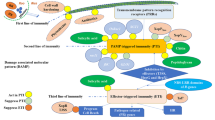Abstract
We investigated the efficacy of a microbial copper agent to protect against bacterial blight of grapevine caused by Xylophilus ampelinus from 2012 to 2014 in Hokkaido, Japan. A solution of the basic copper wettable powder sulfate was sprayed at 10-day intervals in two processing plots, using two application protocols: seven rounds of application immediately after leaf development and three or four applications at the initial onset of the disease. Due to the low disease incidence for the duration of the study, symptoms were only observed on leaves, not on spikes or fruits. The disease incidence in plots that were treated at the initial stage of the disease was significantly lower than in untreated plots. This protective effect improved as the number of applications was increased. After overwintering of these vines, X. ampelinus was detected in the axillary buds of untreated vines, but it was seldom detected in vines treated at the initial onset of the disease. Thus, the copper agent controlled the extent of infection during the year of treatment and reduced the quantity of bacteria surviving overwintering. Our findings indicate that three or four applications of the agent at the initial stage of the disease should be effective to prevent bacterial blight of grapevines.


Similar content being viewed by others
References
DerSimonian R, Kacker R (2007) Random-effects model for meta-analysis of clinical trials: an update. Contemp Clin Trials 28:105–114
DerSimonian R, Laird N (1986) Meta-analysis in clinical trials. Control Clin Trials 7:177–188
Grall S, Manceau C (2003) Colonization of Vitis vinifera by a green fluorescence protein-labeled, gfp-marked strain of Xylophilus ampelinus, the causal agent of bacterial necrosis of grapevine. Appl Environ Microbiol 69:1904–1912
Grall S, Roulland C, Guillaumès J, Manceau C (2005) Bleeding sap and old wood are the two main sources of contamination of merging organs of vine plants by Xylophilus ampelinus, the causal agent of bacterial necrosis. Appl Environ Microbiol 71:8292–8300
Grasso S, Moller WJ, Refatti E, di San M, Lio G, Granata G (1979) The bacterium Xanthomonas ampelina as causal agent of a grape decline in Sicily. Riv Patol Veg S IV 15:91–106
Kanda Y (2013) Investigation of the freely available easy-to-use software ‘EZR’ for medical statistics. Bone Marrow Transpl 48:452–458
Kawaguchi A, Inoue K, Inoue Y (2014) Biological control of bacterial spot on peach by nonpathogenic Xanthomonas campestris strains AZ980101 and AZ98106. J Gen Plant Pathol 80:158–163
Komatsu T, Kondo N (2015) Winter habitat of Xylophilus ampelinus, the cause of bacterial blight of grapevine, in Japan. J Gen Plant Pathol 81:237–242
López MM, Gracia M, Sampayo M (1987) Current status of Xanthomonas ampelina in Spain and susceptibility of Spanish cultivars to bacterial necrosis. EPPO Bull 17:231–236
Madden LV, Paul PA (2011) Meta-analysis for evidence synthesis in plant pathology: an overview. Phytopathology 101:16–30
Panagopoulos CG (1969) The disease “Tsilik marasi’’ of grapevine: its description and identification of the causal agent (Xanthomonas ampelina sp. nov.). Ann Inst Phytopathol Benaki 9:59–81
Panagopoulos CG (1987) Recent research progress on Xanthomonas ampelina. EPPO Bull 17:225–230
Rosenberg MS, Garrett KA, Su Z, Bowden RL (2004) Meta-analysis in plant pathology: synthesizing research results. Phytopathology 94:1013–1017
Sawada H, Kunugi Y, Watauchi K, Kudo A, Sato T (2011) Bacterial spot, a new disease of grapevine (Vitis vinifera) caused by Xanthomonas arboricola. Jpn J Pathology 77:7–22
Shinmura A, Horita H, Inagawa Y (2012) Occurrence of bacterial blight of grapevine caused by Xylophilus ampelinus in Japan (abstract in Japanese). Jpn J Phytopathol 78:60
Tango T (ed) (2002) Guide to meta-analysis (in Japanese). Asakura-Shoten, Tokyo
Willems A, Gillis M, Kersters K, Van Den Broecke L, De Ley J (1987) The taxonomic position of Xanthomonas ampelina. EPPO Bull 17:237–240
Acknowledgments
We thank Mr. M. Ikenaga (Hokkaido Research Organization [HRO], Central Agricultural Experiment Station) for his support during the field survey and Dr. M. Saito (HRO, Central Agricultural Experiment Station) for her helpful comments and encouragement. Thanks are also extended to the agricultural extension workers and grapevine producers in Yoichi-town and Furano-city.
Author information
Authors and Affiliations
Corresponding author
Rights and permissions
About this article
Cite this article
Komatsu, T., Kondo, N. Efficacy of a copper-based bactericide in controlling bacterial blight of grapevines caused by Xylophilus ampelinus . J Gen Plant Pathol 81, 409–414 (2015). https://doi.org/10.1007/s10327-015-0609-8
Received:
Accepted:
Published:
Issue Date:
DOI: https://doi.org/10.1007/s10327-015-0609-8




